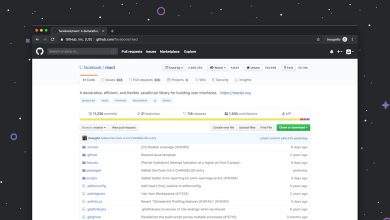
3 Best Free and Paid Webinar Software for Linux
Among Linux users, finding robust webinar software can be a challenge, especially when searching for tools that are both powerful and compatible with open-source systems. Whether you’re hosting a large-scale online seminar, conducting a team meeting, or delivering an interactive workshop, the right webinar software can make all the difference. In this article, we explore the 3 best webinar software options for Linux, including both free and paid solutions, so you can find the perfect fit for your next virtual event.
1. Jitsi Meet – Best Free Open-Source Option
Jitsi Meet is an open-source video conferencing tool that works seamlessly on Linux. Since it runs in the browser, there is no need to install bulky software — a huge plus for Linux users.
- Pros: 100% free, no account required, supports end-to-end encryption, screen sharing, and chat.
- Cons: May require more technical setup for branded or large-scale events, lacks advanced analytics.
This tool is ideal for smaller webinars or casual team meetings, especially for communities that appreciate open platforms. For developers or tech-savvy users, self-hosting Jitsi allows greater control and customization over the environment.
[ai-img]jitsi meet conference linux open source[/ai-img]Why it works on Linux: Being browser-based and open-source means there’s high compatibility and flexibility. Additionally, Jitsi Meet integrates well with Linux-based systems for scalability and backend management.
2. Zoom – Best for Professional-Grade Webinars
Even in Linux environments, Zoom remains a powerhouse for large-scale webinars. It provides top-notch features like HD video, breakout rooms, registrant tracking, and robust scheduling options.
- Pros: Offers a native Linux client, reliable performance, supports thousands of attendees.
- Cons: Free plan has a 40-minute limit for groups, full-feature packages can become expensive over time.
Zoom is well-suited for educational institutions, corporate training, and marketing events. Its webinar add-on enables you to manage large audiences with Q&A, polling, and real-time engagement tools.
[ai-img]zoom webinar speaker audience linux[/ai-img]Linux compatibility: Zoom provides a native Linux binary for distributions such as Ubuntu, Debian, and Fedora. This means it’s optimized to run smoothly within Linux desktop environments without needing to rely on a browser interface.
3. BigBlueButton – Ideal for Online Learning
Originally designed with online education in mind, BigBlueButton is a free, open-source webinar solution that works beautifully on Linux — especially when hosted on a Linux server. It supports real-time video, audio, whiteboards, polling, breakout rooms, and session recording.
- Pros: Tailored for e-learning, highly customizable, integrates with Moodle and other LMS platforms.
- Cons: Requires significant server resources and some technical know-how for deployment.
Educators and institutions love the integrated learning tools, especially in remote teaching environments. Plus, the open-source nature invites collaboration and development from Linux communities around the world.
Linux ecosystem benefits: BigBlueButton is built to run primarily on Linux servers, making it a natural option for schools, universities, and open-source advocates who prioritize data control and transparency.
[ai-img]bigbluebutton online teaching linux education[/ai-img]Final Thoughts
Choosing webinar software that works well with Linux doesn’t have to be a compromise. Each of these three options — Jitsi Meet, Zoom, and BigBlueButton — offers unique strengths that cater to different use cases and user skill levels.
- Jitsi Meet: Best for privacy-focused, small to mid-sized webinars without frills.
- Zoom: Great for professional, scalable webinars and events that require reliability.
- BigBlueButton: Top choice for educators using Linux in structured learning environments.
No matter your goal or audience size, one of these tools is sure to help you host powerful and engaging webinars — all while staying true to the Linux ecosystem.



